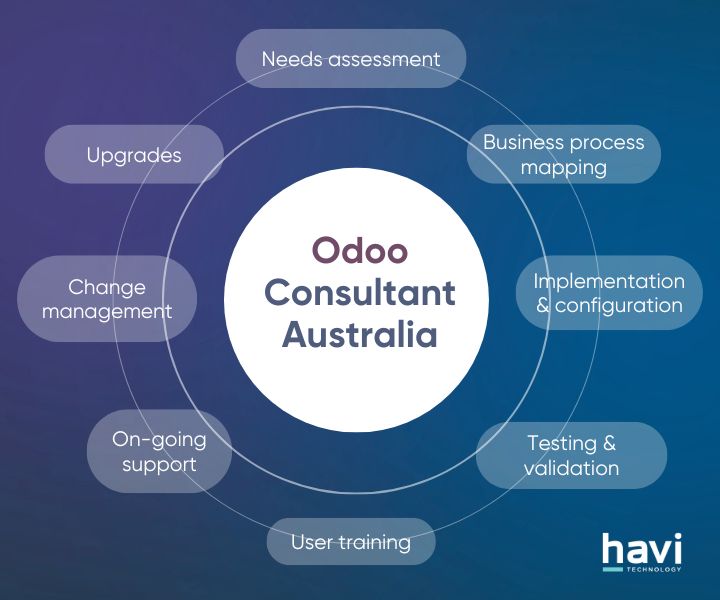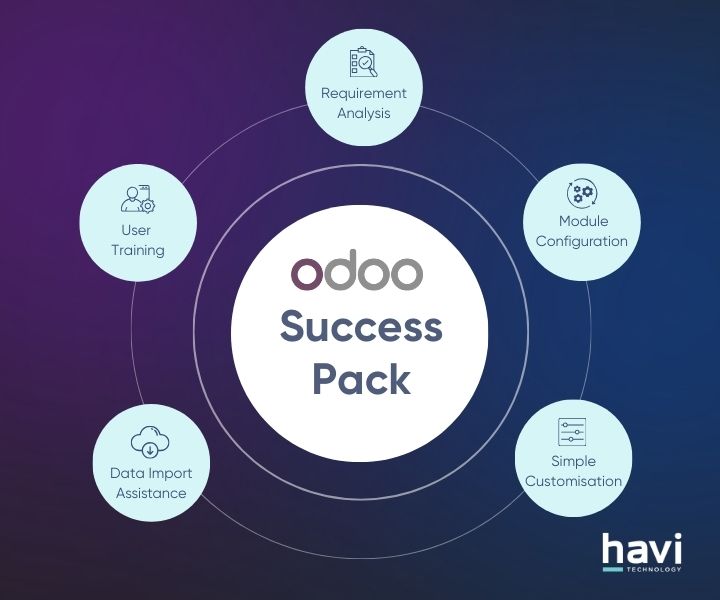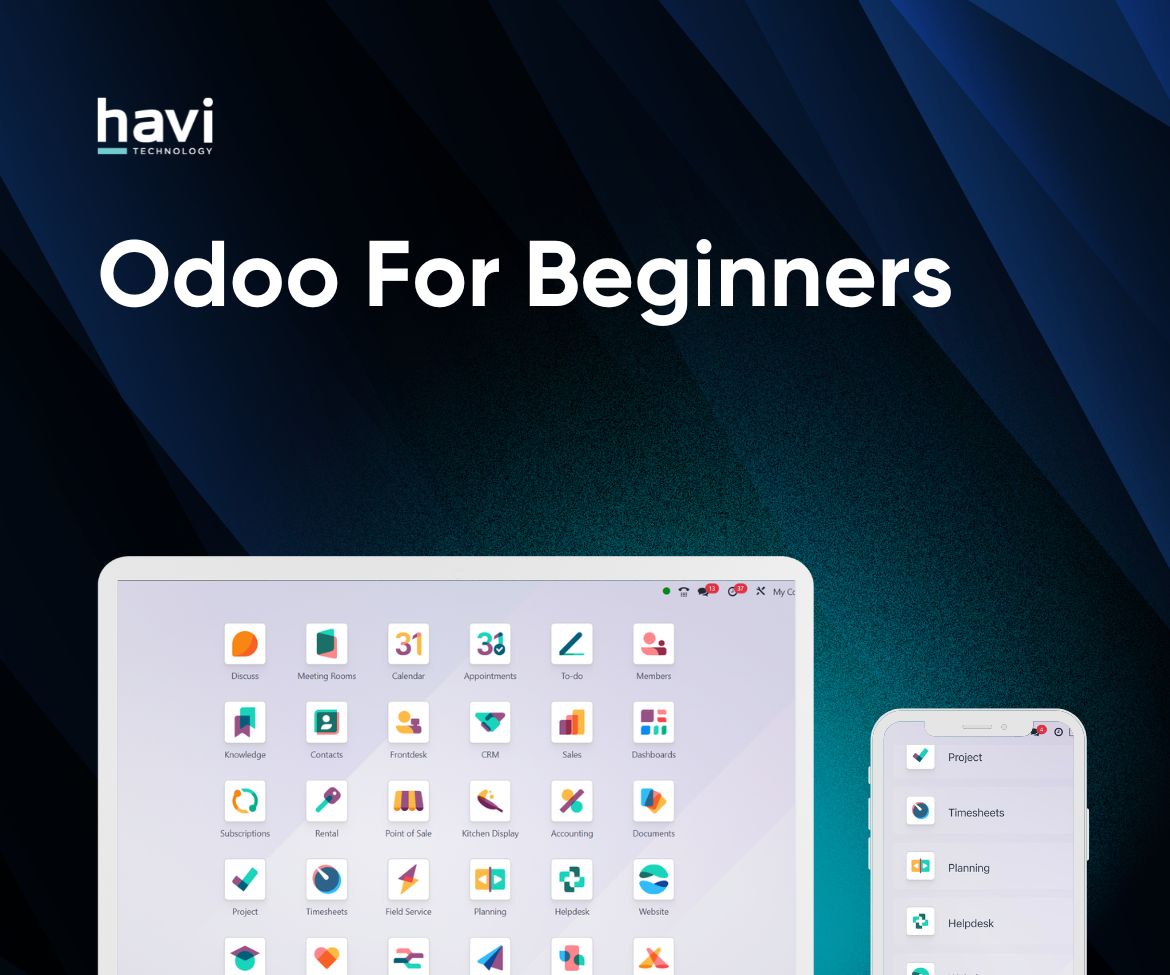TABLE OF CONTENTS
- 1. Website and Customer Experience
- 1.1. Website & eCommerce: Guided Onboarding, New Templates, Google Merchant Sync
- 1.2 Live Chat and Discuss: Expertise Routing, Chat Insights, Status Controls
- 2. Sales, CRM and Subscriptions
- 2.1 Sales: Editable Optional Products, Catalogue Sections, Portal Top-Up
- 2.2. CRM and Marketing: AI Probability, Lead Sources, Kanban Linking
- 2.3. Subscriptions: Prorated Billing, One-Time Sales, Portal Edits
- 3. Inventory, Purchase and Barcode
- 3.1. Inventory and Purchase: Packages within Packages, Forecasted Reports, Suggested Quantity to Replenish
- 3.2. Barcode: Operation Descriptions, Product Source Location, Lot and Serial Number Properties
- 4. Manufacturing, Shop Floor & Planning
- 4.1. MRP: Gantt View, Editable Deadlines, Labour-Based Valuation
- 4.2. Shop Floor & Planning: Barcode Workflows, Shift Scheduling, Routing Edits
- 5. Project, Timesheets and Services
- 5.1. Project and Timesheet: Smart Assign, Mobile Grid View, Priority Alerts
- 5.2. Field Service and Appointments: Calendar View, Technician Tracking, Mass Planning
- 6. HR, Payroll and Expenses
- 6.1. Payroll: Redesigned Engine, Payslip Correction, Unified Master Report
- 6.2. Time Off and Expenses: Odoo Master Cards, Multi-Expense Submission, Complex Duration
- 7. Accounting, Compliance and ESG
- 7.1. Accounting: Peppol Invoicing, Bank Sync, BAS Reports
- 7.2. ESG App: Scope 1–3 Emissions, CSRD Reporting, Auto Category Mapping
- 8. AI, Documents and Sign
- 8.1. AI App: Prompt Commands, Auto Field Completion, Voice and Web Search
- 8.2. Sign and Documents: Bulk Signing, Chatter Integration, Access Controls
- Odoo 19: What’s Coming For Australia?
- 1. Fully compliant Payroll AU with STP Phase 2 and SuperStream
- 2. ABA file payments, Direct Debit for wages/super
- 3. Multi-stream YTD import, backpay, and validations
- 4. 2025–26 tax rules, STSL changes, ATO security
- 5. Peppol invoicing, GST toggle, fringe benefits, BAS automation
- 6. Tyro integration
- 7. Roadmap: SBR BAS lodging, Open Banking, PEL Access, Fiduciary Program
- Odoo 19’s FAQs For Australian Teams
- 1. How should Australian businesses prepare?
- 2. How is Odoo 19 different from Odoo 18 in Australia?
- 3. How can AI in Odoo 19 be tailored for real business outcomes?
- 4. How can I try Odoo 19 or upgrade from my current version?





Odoo AI is the expanding suite of artificial intelligence capabilities embedded across Odoo’s ERP and CRM platform, designed to automate workflows, enrich data quality, and drive contextual decision-making at scale. Officially introduced in Odoo 17 with OCR and content generation, it gained strategic clarity with the release of the Odoo AI App in Odoo 18.3, and is set to advance further in Odoo 19.
For Australian businesses, AI adoption has reached 40% among SMEs and up to 68% across all enterprises (National Artificial Intelligence Centre, 2025; CSIRO, 2023). Odoo AI represents not just automation, but operational transformation - from digitised compliance to real-time sales predictions.
This article explores:
What Are the AI Features Already Available in Odoo? (Before the AI App)
Odoo already includes powerful AI capabilities across its core modules, enabling automation and data enrichment even before the release of the dedicated AI App in Odoo 18.3. These features, from invoice digitisation to AI-powered content, are integrated into standard apps like Accounting, CRM, and Website, helping businesses streamline operations without extra setup.
Below, we explore three high-impact AI tools already embedded in Odoo.
1. Odoo AI Website Builder
The Odoo AI Website Builder is a no-code tool that uses artificial intelligence to automatically generate website layouts and copy based on your business type and selected features. Odoo’s AI suggests a layout and generates content aligned with your chosen sector in just three guided steps:
The builder draws on business metadata and AI models, including ChatGPT, to produce website copy that fits your tone and purpose. It helps SMEs in retail, services, or e-commerce reduce content creation time and accelerate their go-live process.
For Australian businesses aiming to improve their digital presence while controlling costs, the AI Website Builder is a strategic enabler. It significantly reduces content creation time and ensures your landing pages are structured for both user clarity and SEO performance, ideal for a market demanding both speed and compliance.
2. Odoo AI Text Generation (ChatGPT Integration)
Odoo AI Text Generation is the built-in content assistant powered by ChatGPT, allowing users to draft, refine, or rewrite text across multiple modules using real-time context from their records. It is fully integrated into Odoo 17+ and accessible in modules like CRM, Marketing, Knowledge, and Website.
The image below highlights how Odoo’s AI assistant suggests refined, context-aware content:
It supports a wide range of use cases across:
For Australian businesses that need to communicate with clarity and professionalism, especially across regulated industries, this tool ensures that messaging stays on-brand and efficient. The AI also adapts to tone preferences, helping teams produce polished text faster without starting from scratch.
3. Odoo AI OCR for Invoices & Documents
Odoo AI OCR (Optical Character Recognition) is an automation engine embedded in the Accounting app that reads scanned or uploaded invoices and converts them into structured financial records. It extracts critical fields like totals, due dates, vendor info, including ABN and GST, and automatically drafts vendor bills for validation.
Watch from 1:55 to see how Odoo’s AI-powered OCR reads scanned vendor bills and auto-generates draft entries in the Accounting app:
When a document is uploaded, via email, scan, mobile app, or API, Odoo reads the content, extracts fields such as vendor name, invoice lines, totals, due dates, and Australian-specific data like ABN and GST. These fields are then used to draft a vendor bill, which users can validate or adjust before posting.
The automation workflow:
This service uses IAP credits and supports metadata extraction (e.g. Factur-X, barcodes), making it especially useful for businesses managing high volumes of supplier documentation or migrating toward paperless workflows.
While these embedded features already offer clear productivity gains, Odoo 18.3 marks a turning point, introducing a dedicated AI App that brings conversational agents, smart field logic, and system-wide automation into one cohesive interface.
What’s the Odoo AI App? (From Odoo 18.3 and Beyond)
The Odoo AI App, introduced in Odoo 18.3, is a native application that enables users to build AI-driven automations, assistants, and field intelligence directly within the Odoo platform, without needing external tools or complex code. Unlike previous AI features embedded across modules, this app centralises and expands AI capabilities through AI Agents, AI Fields, AI Drafting, and Server Actions, creating an integrated layer of automation across sales, HR, and operations.
This section explores Odoo AI App’s core features and how they deliver business value in real-world Australian use cases.
1. AI Agents
AI Agents in Odoo are intelligent, context-aware assistants that interact with users and perform defined actions based on internal company knowledge. These agents are configured with natural language prompts, linked documents, and action rules, giving them the ability to chat, schedule meetings, retrieve insights, and guide workflows.
As demonstrated by Fabien Pinckaers, Odoo’s founder, a legal AI agent can be configured to interpret internal compliance policies and even book a meeting with the legal team, all directly from within the platform. These agents pull data, follow logic, and respond based on company-specific content and intent.
This video shows a compliance-focused AI agent in action by Fabien, interpreting internal policies and booking meetings directly from Odoo:
Australian use case example
A workforce compliance agent trained on Fair Work Act guidelines could answer HR queries, validate award classifications, and assist line managers in scheduling audits or resolving disputes, without escalating to HR every time.
2. AI Fields
AI Fields in Odoo are intelligent, prompt-based fields that automatically populate or update data by interpreting system context. Built in Odoo Studio, these fields respond to natural language prompts and can extract insights from structured or unstructured information, such as website data, purchase history, or internal metadata.
As shared by Fabien Pinckaers, this feature lets users enrich customer records by writing a single prompt, for example, inferring a company’s industry based on website or purchase history. The AI then fills in the appropriate field based on known data points.
Here, in the following video, Fabien uses an AI Field that auto-fills customer industry data by analysing context such as the website or past purchases:
Australian use case example
A prompt like “Fill in customer industry based on ABN or website domain” enables businesses to streamline lead profiling while maintaining data accuracy for reporting or compliance.
3. AI Draft
Odoo’s AI Draft feature automatically composes emails, replies, or internal notes based on the full context of CRM or support interactions. It reads previous messages, lead stages, contact data, and history to suggest accurate, relevant responses, available in a single click.
As shown in a LinkedIn demo by Fabien Pinckaers, the tool reads the full context, from lead source to last activity, and suggests a ready-to-send response. With one click, users can polish the tone, clarify the message, or send it immediately.
This clip shows how Fabien uses Odoo AI to read full CRM context to instantly draft accurate, on-brand email replies:
Australian use case example
For Australian teams, this feature helps ensure fast, consistent communication across internal channels and customer touchpoints - critical for regulated or service-driven industries.
4. AI-Powered Server Actions
AI-Powered Server Actions allow Odoo users to automate backend workflows by combining traditional triggers with AI reasoning, all without writing code. Prompts are defined inside Studio to tell the AI how to act based on business context, such as routing leads, tagging records, or escalating issues.
As illustrated in a post by Fabien Pinckaers, users can define a prompt such as “Assign this lead to a Business Development Manager based on region and product type”. The AI evaluates available data and performs the update dynamically.
The following demo illustrates how AI-driven server actions can route leads based on logic like region and product type using simple prompts:
Typical flow:
Australian use case example
Use “Assign to BDM NSW if industry is logistics and postcode starts with 2” to automate regional lead assignment across territories.
This approach helps businesses scale operations efficiently while maintaining precision in task ownership.
5. AI Email Template Prompts
Odoo AI email template prompts enable users to embed dynamic AI prompts directly into email templates, enabling personalised message generation at scale. Whether sending a single message or a batch campaign, the AI uses the prompt and records context, such as customer history or transaction details, to generate content automatically.
Australian use case example
An e-commerce team could insert a prompt like “Summarise the customer’s last 3 purchases and suggest a related item” into their email template. Odoo AI generates tailored follow-ups for each recipient, improving engagement while reducing manual effort.
This enhancement ensures consistent, tailored communication across high-volume workflows, particularly for Australian sales, marketing, and customer service teams.
Together, these tools form the foundation of Odoo’s native AI layer. But to make AI truly valuable in Australia, businesses need localisation, from compliance logic to data integrations. That’s where tailored enhancements come in. Let’s explore how Australian companies are adapting Odoo AI to local needs.
How Australian Businesses Can Tailor Odoo AI with Havi’s Advanced Solutions
Australian businesses can maximise Odoo AI’s value by working with Havi to build tailored enhancements aligned with local workflows, data, and compliance standards. While Odoo provides a strong AI foundation, Havi’s solutions extend this further, connecting AI with real-world operational needs such as digitising invoices, forecasting stock, automating support, and syncing with local systems like Xero, MYOB, and Employment Hero.
This section explores four practical, high-impact AI enhancements for Australian businesses today.
1. Advanced AI OCR for AU Financial Documents
Havi’s Advanced AI OCR solution automates document digitisation at scale, built specifically to handle diverse Australian formats and compliance data. Unlike off-the-shelf OCR tools, our system learns from each document, including financial forms, HR contracts, and purchase orders, to improve accuracy with every scan.
Example applications
For example, the AI extracts fields like ABN, GST, and payment terms from scanned PDFs, then feeds this data into Odoo Accounting or syncs directly with Xero, enabling real-time reconciliation.
This no-code setup eliminates data entry errors and speeds up approvals, giving businesses a paperless, audit-ready workflow.
2. AI Predictive Analytics and Forecasting
Havi’s predictive analytics engine helps Australian businesses forecast demand, sales, and inventory trends before issues arise. By analysing historical data, the system detects seasonal patterns and identifies bottlenecks across supply chains and production lines.
Example applications
Integrated across CRM, Inventory, and Accounting, these insights drive proactive planning, cash flow optimisation, and smarter budgeting.
3. Custom AI Chatbots for Various Purposes
Havi’s custom AI chatbots transform both internal support and customer service with fast, context-aware responses, built right into your Odoo portal or website. Unlike static bots, these agents understand business logic, respond to natural prompts, and operate 24/7.
Example persona
For instance, an Australian e-commerce brand can deploy a bot trained on warranty and shipping policies to handle questions like “Where is my order?” or “Can I return this item?”, reducing escalation and improving satisfaction.
Internally, managers might ask “What’s our Q2 revenue?” or “List pending WA orders,” unlocking real-time answers without reporting delays.
4. Local Integration Scenarios
To deliver full operational value, Havi enables AI-to-system integrations tailored to the Australian business landscape. These connections ensure Odoo AI works seamlessly with tools already in use.
Examples integrations
These local integrations unlock true process automation, using AI logic triggered by real-time, cross-platform data.
From digitisation to decision-making, Odoo AI becomes truly valuable when applied to real-world business needs. But before adopting, many Australian leaders still ask: How does it all work, and what should we expect? Let’s answer the most common questions next.
From Adoption to Confidence: Frequently Asked Questions
1. Does Odoo AI work with Xero, MYOB, or Employment Hero (KeyPay)?
Yes, but with the help of an Australian Odoo Partner like Havi. The Havi team will ensure these integrations meet local requirements. Specifically, we enable Odoo AI to trigger data sync with Xero from OCR-processed invoices, link customer or payroll data with MYOB, and auto-fill HR actions in KeyPay or Employment Hero (Learn more about key integration features between Odoo and Xero by Havi, and how to ensure they meet local compliance.).
2. What AI features are available across different Odoo modules?
Odoo’s AI features vary by module and version, and Havi can customise them for your business across:
Features like AI Agents and advanced logic are introduced in Odoo 18.3+ via the new AI App. For a full breakdown of Odoo 18’s general improvements beyond AI, see our overview.
3. How does the Odoo AI App differ from using ChatGPT?
Unlike ChatGPT, the Odoo AI App is native to the platform. It operates on internal data, understands module context, and performs actions, not just text generation. ChatGPT offers generic language output, while Odoo AI blends prompts, records, and user context to drive adaptive automation.
4. Will AI in Odoo replace my sales or finance team?
No. Odoo AI is designed to augment, not replace, your workforce. It handles repetitive tasks like invoice processing, field completion, and email drafting. Human teams remain in control of approvals, strategies, and relationships. The outcome: fewer manual steps, less admin, and more time for customer engagement or financial insights.
How to Get Started with Odoo AI? - A Practical Guide for AU Companies
To get started with Odoo AI, Australian businesses should begin by activating built-in features in CRM, Accounting, and Website modules, then explore advanced capabilities via the AI App and Havi’s enhancements tailored to local needs. These include GST compliance, Xero integration, and predictive operations.
1. Identify high-impact use cases
High-impact AI use cases are tasks that are repetitive, error-prone, or time-consuming, such as invoice scanning, CRM replies, lead assignment, and data validation. These areas generate the most ROI when automated with Odoo AI, helping Australian businesses reduce manual work and improve operational precision across departments.
2. Try built-in Odoo AI features
To access native Odoo AI features, activate them directly within standard modules like CRM, Accounting, and Website. No new installations are needed. For OCR capabilities, ensure your IAP credits are active. These built-in tools allow you to test automation across your live business workflows using data you already manage. Also, see how OCR, invoicing, and accounting workflows in Odoo work together in Australian contexts.
3. Demo the Odoo AI App
To explore the latest AI App introduced in Odoo 18.3, enterprise users should book a demo with Havi, an official Odoo Partner in Australia. You’ll see how internal agents like a meeting scheduler or HR assistant operate in real time, without coding, giving your team practical exposure in a locally relevant setup. If you’d like a preview of what’s coming next, see our breakdown of Odoo 19’s AI roadmap and feature set.
4. Customise for your Australian context
Odoo AI becomes more valuable when tailored with Australian data, such as ABNs, GST formats, or Fair Work rules. We can help you create prompt-based fields or agents that handle tasks like award classification or invoice matching. Our localisation solutions ensure your automation aligns with legal, tax, and operational standards in Australia.
Utilise Odoo AI’s full value with the Havi Team, your trusted Odoo Partner in Australia for smart, localised ERP automation.
References: